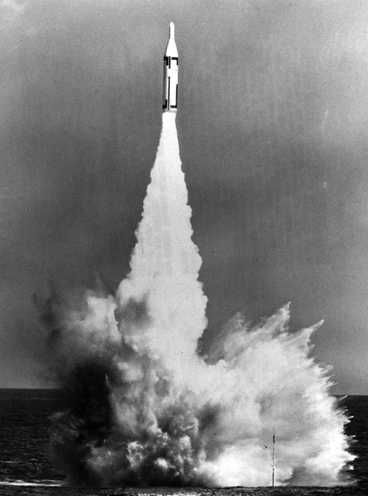|
The follow-on Polaris Missiles A2 and A3 had increased range and payload. U.S. deployment of the Polaris missile series ended with the retirement of the A3 in 1979. The Polaris was launched by the pressure of expanding gas within the launch tube. After gaining a sufficient height above the water's surface, the first stage rocket engine was ignited. The United Kingdom and the United States signed the Polaris Sales Agreement in 1963. For nearly three decades, the UK used the A3 for its submarine deployed strategic missiles. |

USS George Washington SSBN-598 fires the
first Polaris Missile ever launched from an underwater submarine on 20
July 1960
|
| .
Photograph copyrighted by Lockheed-Martin Missile and Space |